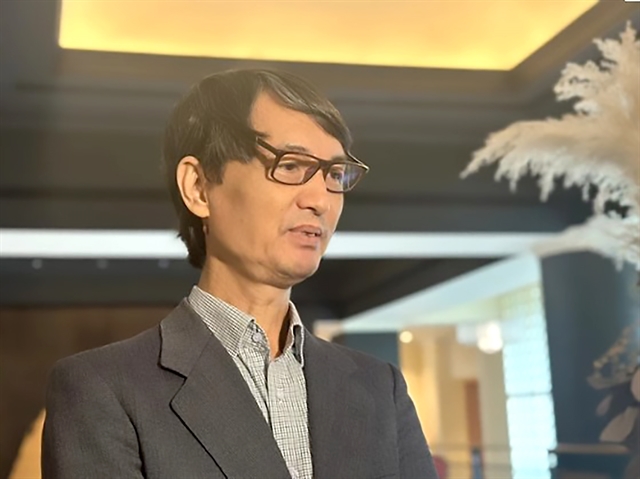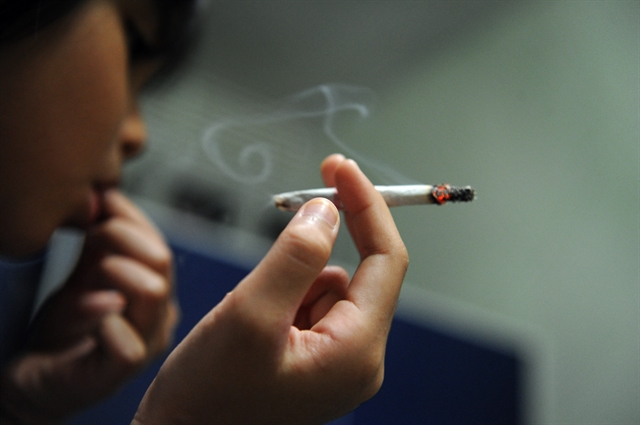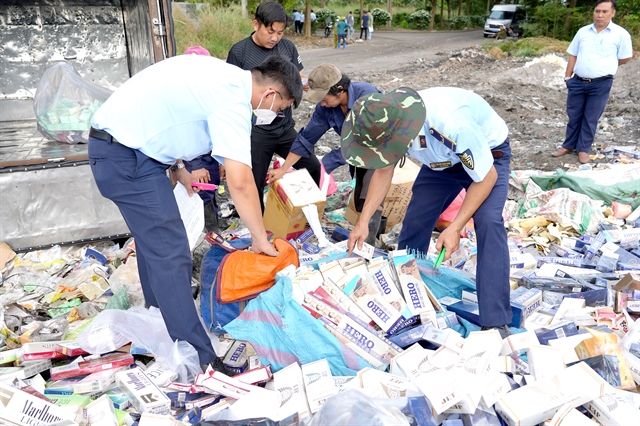 Opinion
Opinion

 |
| Dr Nguyễn Tuấn Lâm, technical officer for the Tobacco Free Initiative of the World Health Organisation (WHO) in Việt Nam. — VNA/VNS Photo |
Dr Nguyễn Tuấn Lâm, technical officer for the Tobacco Free Initiative of the World Health Organization (WHO) in Việt Nam, speaks to the press on recommendations for tobacco tax increases in an effort to reduce the dangers of smoking.
The Ministry of Finance (MoF) is receiving feedback on the draft amendment to the Law on Special Consumption Tax, which plans to keep cigarette tax at 75 per cent of the ex-factory price and gradually increase the absolute tax during the 2026-2030 term under two proposed options. What is your assessment of this proposal?
The WHO gives high regard to the two options for tobacco tax increases by 2030 as proposed by the Ministry of Finance.
According to Option 1, the absolute tax will increase to VNĐ2,000 (8 US cents) per cigarette pack by 2026. From 2027 to 2030, this tax will rise by an additional VNĐ2,000 per pack each year. By 2030, the absolute tax will be VNĐ10,000 ($0.4) per pack.
In Option 2, the absolute tobacco tax will increase to VNĐ5,000 (20 US cents) per cigarette pack, then increase by VNĐ1,000 each year thereafter. By 2030, the absolute tax will be VNĐ10,000 per pack.
In the second option, the initial absolute tax is VNĐ5,000 per pack compared to VNĐ2,000 per pack in the first option. WHO considers Option 2 to be more effective in quickly reducing the smoking rate when it starts being applied in 2026.
Overall, by 2030, WHO estimates that the MoF’s proposals will help reduce the number of smokers by 2.5 million people. This is because without intervention measures through tax, the smoking rate will rise and there will be an additional 2.5 million new smokers.
I believe that the MoF’s proposal on tobacco tax is sufficient to prevent an increase in the number of smokers, although the smoking rate should decrease according to WHO estimates.
Based on the model that we have developed in collaboration with the MoF and the Ministry of Health (MoH), this proposal should reduce the smoking rate among the male population to 37.5 per cent, nearly achieving the national target.
However, WHO still recommends a stricter option, which is to increase the special consumption tax to VNĐ5,000 per pack initially, then to VNĐ15,000 ($0.6) per pack of 20 cigarettes by 2030, in addition to the current tax rate of 75 per cent of the ex-factory price. This will help achieve the national target of reducing the smoking rate among the male population to below 36 per cent by 2030.
 |
| Without intervention measures through tax, the smoking rate will rise with an additional 2.5 million new smokers by 2030. — AFP/VNA Photo |
What is WHO’s assessment on tobacco tax increases to reduce the number of smokers?
WHO’s proposal to increase the tobacco tax will help reduce the smoking rate among Việt Nam’s male population to about 35.8 per cent is a relative target, which is expected to help reduce the number of smokers by about 3.2 million.
However, without impactful measures, the number of smokers will increase by 2.5 million people by 2030. WHO’s proposal holds great significance not only in reducing smoking and related illnesses and fatalities, but also in the public’s health.
Increasing the tobacco taxes has another benefit, which is additional tax revenue for the government. We estimate that tobacco tax increases will equal about VNĐ30 trillion ($1.2 billion) each year by 2030, and will be a considerable source of tax revenue.
Both the tobacco tax increase proposals of the MoF and the WHO have positive impacts on protecting the public’s health protection and increasing the government’s revenue.
Some say that such a high tobacco tax will raise concerns about tobacco smuggling. What is your opinion on this?
Việt Nam’s current tobacco tax is very low. Compared to the retail price, Việt Nam’s tobacco tax is about 38 per cent, and between 36 to 38 per cent is a very low level compared to the global average (about 60 per cent compared to that of developing countries and 62 per cent of the global average). The WHO recommends that the tax on tobacco products should be about 75 per cent of the retail price; therefore, Việt Nam’s tobacco tax rate is currently extremely low.
With the MoF’s tax increase proposal, this rate is expected to increase and the retail price will go up by about 59 per cent, and WHO’s recommendation is estimated to increase the tax to about 65 per cent of the retail price, meaning it would be relatively similar to WHO’s best-case recommendation. Such a hike might be high for Việt Nam, but compared to the world, it is not.
Our estimates also show that the MoF’s proposal will only keep the number of smokers from rising. Therefore, it is a relatively good plan, but the WHO’s recommendation will better help lower the number of smokers.
Regarding the smuggling issue, tobacco companies often argue that increasing taxes will worsen the situation, but this is not true for Việt Nam. Việt Nam is maintaining a relatively high import tax [for tobacco products] at 135 per cent, which is necessary.
Recent reports show that the smuggling of tobacco products has eased, dropping to 13 per cent in 2017 from 20 per cent in 2010. This is a good trend, and I hope that the authorities will strengthen inspection to lower this figure even more.
Since 2009, both of Việt Nam’s tobacco tax increases remained very low. Therefore, tobacco is extremely affordable when income and other prices increase. Specifically, from 2010 to 2022, the per capita income rose by more than 300 per cent - threefold - while the tobacco price increased by only over 50 per cent. It is not good and not right that consumers can easily purchase such a harmful product like tobacco at such a low price and such accessibility.
 |
| Authorities prepare to destroy smuggled cigarettes in southern Tây Ninh Province. — VNA/VNS Photo |
Statistics show that about 40,000 Vietnamese die from tobacco-related diseases every year, has this figure increased?
The figure of 40,000 tobacco-related deaths each year that we are seeing is actually a very outdated estimate (since 2006). The current estimate stands at about 70,000 to 80,000. However, we are still working on this research and will announce our findings once the study is completed.
As for tobacco-related deaths, we see that each person who dies early, when they are the breadwinner of their family, leads to grave consequences due to the loss of income for the family themselves and the society as a whole. Tobacco can cause cardiovascular disease, cancer or respiratory disease among people of working age, resulting in loss of workability or premature deaths, which affect family finances. Notably, when one person is hospitalised, many people in the family have to take on the role of caregivers, which is more costly.
I believe that the damage caused by tobacco is unnecessary, as all tobacco-induced premature deaths and losses are avoidable. When we apply impactful policies to reduce the number of smokers, we will reduce the number of people suffering from diseases and premature death. We truly hope that in the near future, the higher tobacco tax increases will lower the number of smokers, patients and premature fatalities. — VNS